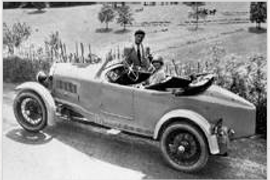BUGATTI Type 40 Models/Series Timeline, Specifications & Photos
First production year: 1926
Engines: Gasoline
Body style: Convertible (spider/spyder, cabrio/cabriolet, drop/open/soft top)
Bugatti introduced the Type 40 as a replacement for the former voiturette Brescia Bugatti in 1926, and it continued the production until 1940. During its 14 years of manufacturing, it said that 780 units were built.
The light nimble car was so much entertaining to drive that the first example built was taken by Jean Bugatti. The Type 40 was a clear example of what the small enterprise could create: a light vehicle had excellent handling for those times and great reliability.
Produced as a grand-sport tourer, the Type 40 Grand Sport featured an open-top bodywork with a narrow engine compartment flanked by slim wheel fenders. The horseshoe-shaped radiator was adorned by a chromed rim and was flanked by two round headlights supported by two struts that sported the body color. At the back, the car was narrower, improving the aerodynamics. Bugatti already knew that this factor was crucial in a sports car. He also ditched the idea of wide rear fenders, installing only narrow ones that covered the upper side of the wire wheels.
Despite its small size, the Type 40 featured a four-seat interior. Interestingly, there was only one door for the car, on the passenger side. Due to the narrow bodywork, the front bucket seats touched their sides. At the back, the car manufacturer installed a bench for two passengers, who had to sit close to each other.
Under the hood, Bugatti installed a 1.5-liter engine. Later on, that was replaced by a larger, 1.6-liter unit.
